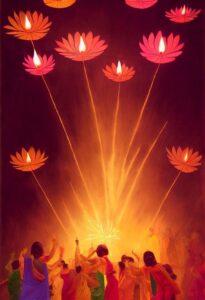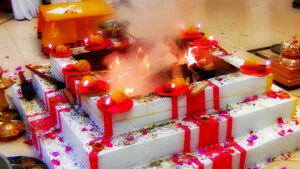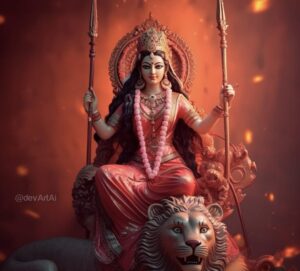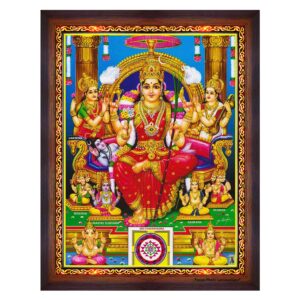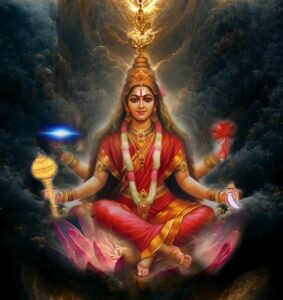Skandamata, the fifth embodiment of Goddess Durga, takes center stage on the fifth day of Navaratri. In the radiant pantheon of Hindu goddesses, one divine form stands out for her boundless maternal love and benevolence—Skandamata. Her name beautifully encapsulates her essence, as it combines “Skanda,” an epithet for Lord Kartikeya with “Mata,” signifying mother. Skandamata’s divine form is often depicted cradling her beloved son, Lord Kartikeya, also known as Skanda or Murugan, in her nurturing embrace. This tender imagery has earned her the endearing title of “the Mother of Skanda.”
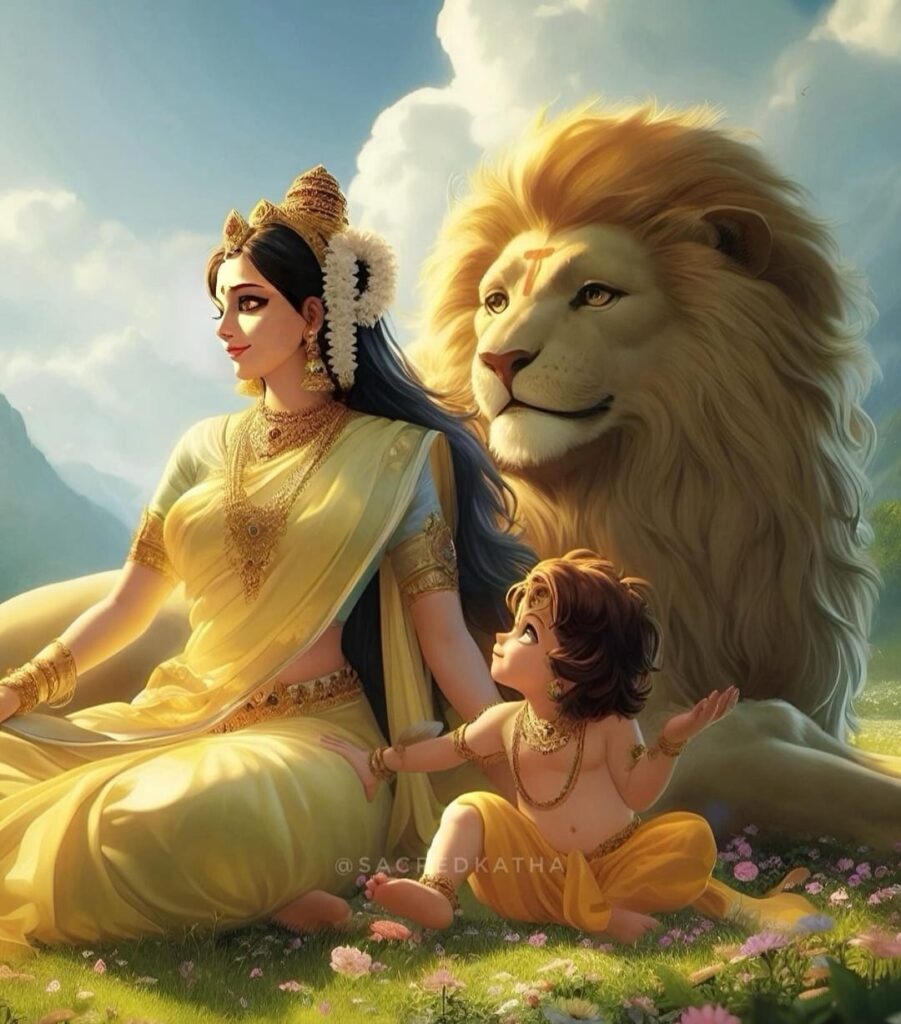
Birth of a Divine Boon: The Invincible Tarakasura
In an age of legends, there reigned a powerful demon named Tarakasura, whose malevolence knew no bounds. The gods dwelling in the heavenly realms found themselves relentlessly tormented by his wickedness. Tarakasura’s reign of terror left the gods seeking a way to end his tyranny.
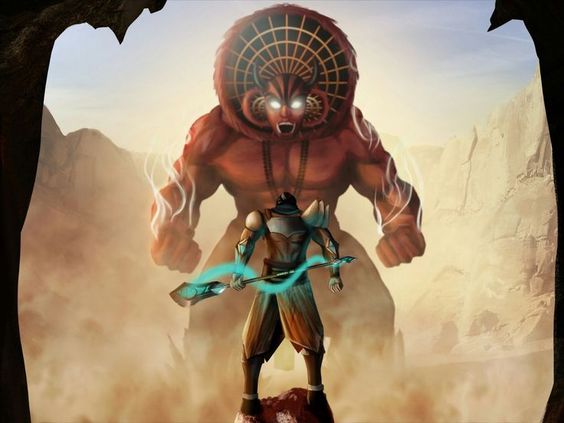
A Penance to Please the Creator
In a fervent pursuit of power, Tarakasura embarked on an arduous journey of penance, determined to win the favor of Lord Brahma, the Creator of the universe. Through his unwavering devotion and the intensity of his penance, Tarakasura hoped to attain a boon that would make him invincible.
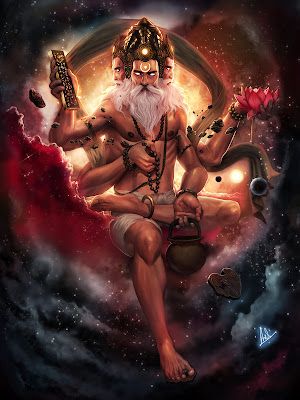
The Boon that Shaped Destiny
Tarakasura’s unyielding penance moved Lord Brahma, who appeared before him to grant a boon. The boon was both an evidence to his dedication and a source of threatening event in the celestial realms. The boon declared that Tarakasura could only be killed by the offspring of Lord Shiva. This decision almost rendered Tarakasura incapable to defeat.
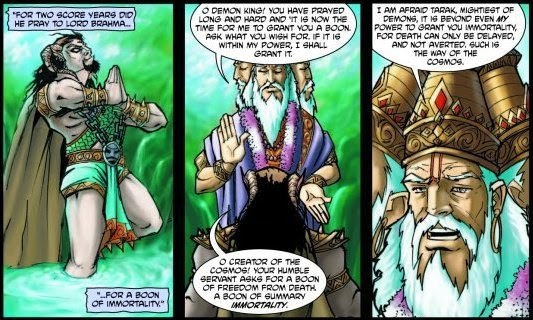
Shiva’s Grief and Retreat
At that moment, Lord Shiva, the Great Ascetic, was immersed in profound mourning. His beloved first wife, Sati, had tragically immolated herself, leaving him in deep sorrow. In response, Shiva embraced a life of solitude and rigorous asceticism, distancing himself from worldly responsibilities.
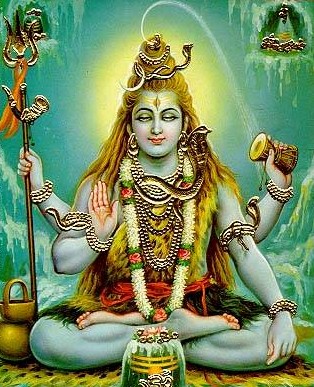
Tarakasura’s Reign of Terror
Tarakasura, confident by his newfound invulnerability, unleashed a reign of terror upon the heavens. His ceaseless attacks brought untold suffering to the celestial beings, who found themselves powerless in the face of his aggression.
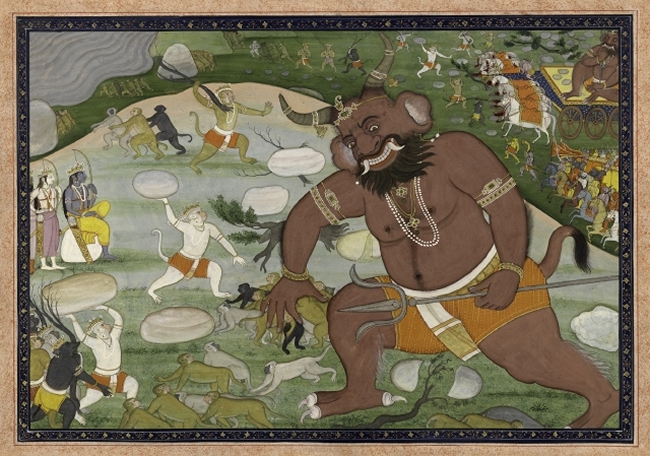
Parvati’s Devotion and Persuasion
In the midst of this chaos, Parvati, the Divine Consort of Lord Shiva, undertook a relentless austerity with a singular purpose – to implore Shiva to let go off his asceticism and come to the aid of the gods. Through her unwavering devotion, she aimed to rekindle his sense of responsibility and duty.

The Divine Union and the Birth of Lord Skanda
Moved by Parvati’s unwavering devotion, Lord Shiva emerged from his ascetic meditation and embraced his role as a householder. Shiva and Parvati’s divine union marked the beginning of a sacred matrimony. Their love gave rise to Lord Karthikeya, also known as Skanda, the deity of war and victory.
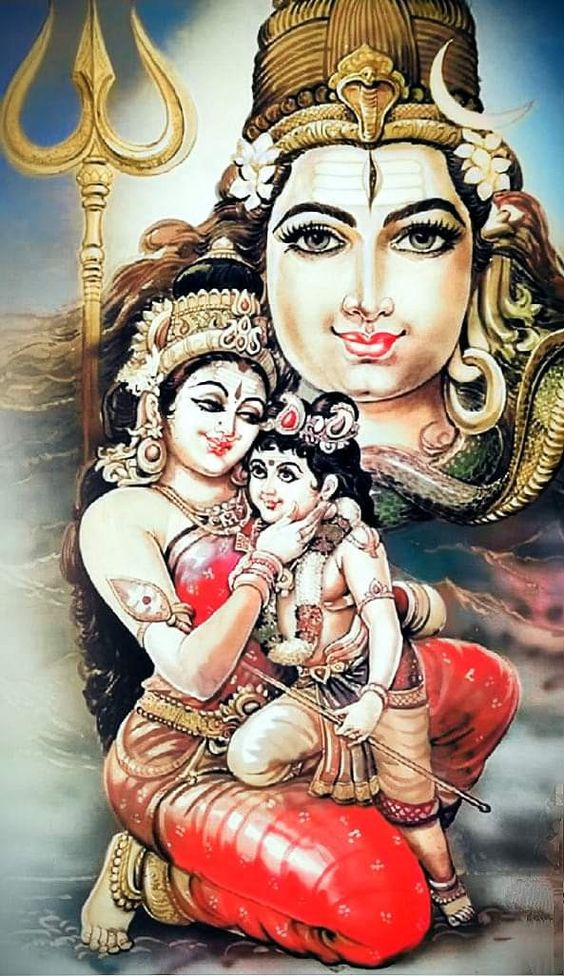
Skanda’s Triumph and Tarakasura’s Defeat
Endowed with immeasurable valor and strength, Lord Skanda led the gods into a fierce battle against Tarakasura. In a climactic encounter, he killed the demon and brought an end to his reign of terror. Skanda’s victory restored peace to the heavenly realms.
Parvati as Skandamata: The Mother of Valor
In recognition of her role as the mother of the valiant Lord Skanda, Parvati came to be known as Skandamata. Her divine persona symbolizes the nurturing and protective aspects of motherhood, as well as the unconquerable determination to safeguard righteousness and goodness.
Appearance:
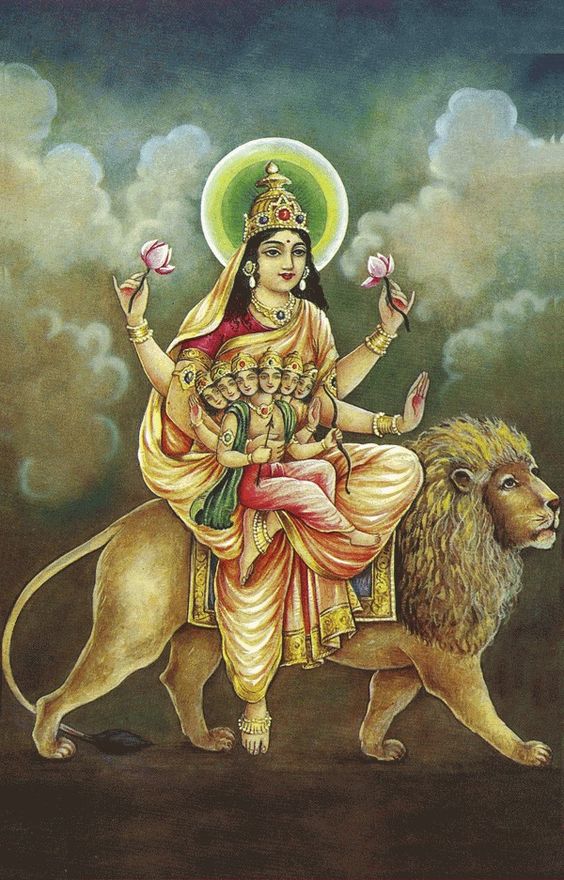
Goddess Skandamata is typically depicted with the following characteristics:
- Four Arms: She is usually shown with four arms, symbolizing her divine power.
- Holding Lord Kartikeya: In two of her hands, she carries her infant son, Lord Kartikeya, who is also known as Skanda. He is often depicted as a young and handsome deity with six heads, seated on his mother’s lap.
- Lotus: Skandamata holds a lotus flower in one of her hands, representing purity, spirituality and the unfolding of divine consciousness.
- Kamandalu: In her other free hand, she carries a sacred water pot (kamandalu), symbolizing the divine nectar of life and purity.
- Lion: She is seated on a lion, her mount, which signifies courage, strength and the fearless nature of the goddess.
- Color: Skandamata is often portrayed wearing a yellow sari, which symbolizes purity and motherly love.
- Crown: She may wear a crown or a headdress adorned with jewels, signifying her royal and divine status.
The image of Skandamata as a loving and protective mother, cradling her child Lord Kartikeya in her arms, symbolizes her nurturing and caring aspect.
Planet associated with Skandamata: Mercury is said to be the planet ruled by Skandamata.
Puja Vidhi or Method of Worship:
After taking a holy bath early in the morning, light a diya in front of Sknadamata.
Maa Skandamata is worshipped with offerings of yellow flowers or a garland made with yellow flowers, gangajal (holy water from the Ganges), kumkum (vermilion) and ghee (clarified butter) on this day.
Also offer home made sweets and any five types of fruits.
Mantras to chant:
Here are the Maa Skandamata Puja Mantras with meanings:
- Om Devi Skandamatayai Namah॥: This is a reverent salutation to Goddess Skandamata, acknowledging her as the divine mother.
- Simhasanagata Nityam Padmanchita Karadvaya। Shubhadastu Sada Devi Skandamata Yashasvini॥: In this mantra, devotees praise Skandamata, who is often depicted seated on a lion and carrying lotus flowers in her hands. They seek her auspicious blessings and acknowledge her glorious nature.
- Ya Devi Sarvabhuteshu Ma Skandamata Rupena Samsthita। Namastasyai Namastasyai Namastasyai Namo Namah॥: This mantra emphasizes that Skandamata resides in all living beings in the form of a mother. Devotees offer their salutations to her repeatedly, recognizing her omnipresence.
- Aim Bijalinka Devi Padayugmadharapara। Hridayam Patu Sa Devi Kartikeyayuta॥: This mantra seeks the protection of Skandamata, whose association with Lord Kartikeya makes her the guardian of the heart. Devotees implore her to protect their hearts.
- Shri Hrim Hum Aim Devi Parvasya Patu Sarvada। Sarvanga Mein Sada Patu Skandamata Putraprada॥: In this mantra, Skandamata is beseeched to protect all parts of the body, ensuring well-being and bestowing the blessing of motherhood.
- Vanavanamritem Hum Phat Bija Samanvita। Uttarasya Tathagne Cha Varune Nairiteavatu॥ Indrani Bhairavi Chaivasitangi Cha Samharini। Sarvada Patu Mam Devi Chanyanyasu Hi Dikshu Vai॥: This elaborate mantra invokes the protection of Skandamata from all directions. It draws upon the energies of various deities to ensure her constant presence and safeguarding.
These sacred mantras and prayers are recited by devotees to seek the blessings and protection of Maa Skandamata, the fifth form of Goddess Durga, during Navaratri.
Devotees also prepare a special bhog (offering) that is prepared with banana and cardamon and is offered as Prasadam to Skandamata.
The Blessings of Skandamata
Skandamata’s benevolence knows no bounds. Devotees who approach her with pure hearts receive her blessings in abundance. She bestows wisdom, wealth, power and prosperity upon her faithful followers. Her divine grace is believed to grant inner peace, contentment and a profound sense of bliss.
From Ignorance to Enlightenment
Skandamata’s blessings hold the transformative power to uplift even the most intellectually challenged souls to heights of intelligence and enlightenment. With her guidance, devotees embark on a journey towards deeper consciousness, transcending the worldly realm and moving closer to the ultimate goal of moksha or spiritual liberation.
A Divine Embrace: Skandamata’s Unconditional Love
At the heart of Skandamata’s significance lies her unwavering love, which encapsulates the essence of motherhood. She is not merely a deity to be venerated; she is the embodiment of the purest, most nurturing love, offering solace, wisdom and the path to salvation to all who seek her divine embrace.
Skandamata, the Divine Mother of Wisdom
Skandamata, an embodiment of maternal energy, holds profound spiritual significance. She is often depicted with her son Skanda, who represents the six senses, symbolizing the dynamic relationship between a mother and her child. Skandamata is not just a mother but also the source of profound knowledge.
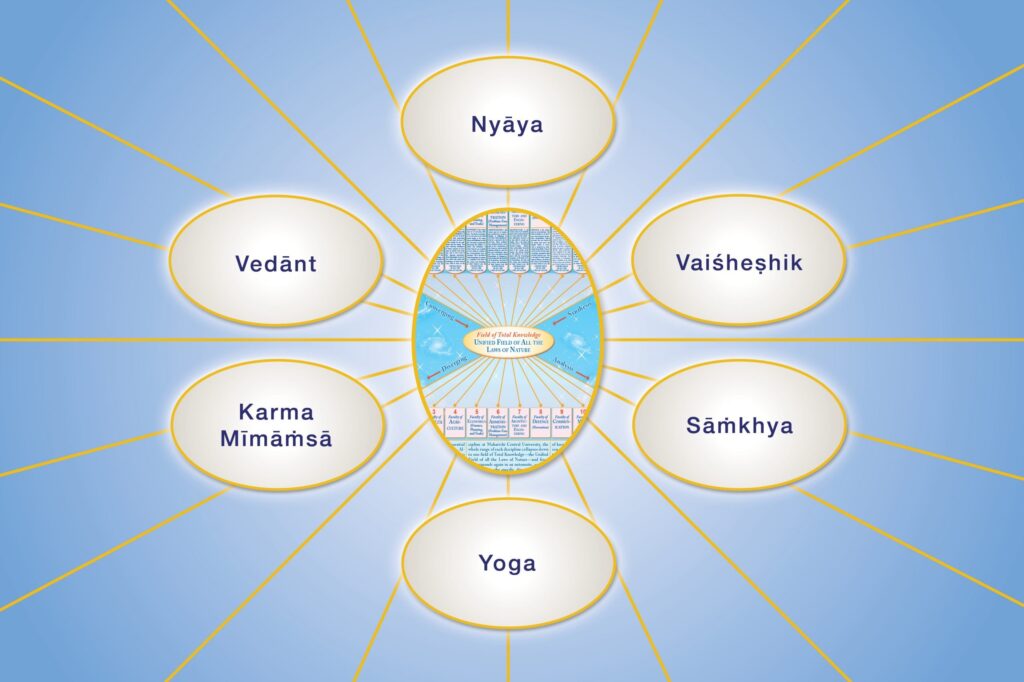
It is believed that Skandamata is the mother of six key systems of knowledge or philosophy – Nyaya, Vaisheshika, Sankhya, Yoga, Vedanta and Mimamsa.
The six key systems of knowledge or philosophy, often referred to as the “Shad-Darshanas,” are significant schools of thought in Hindu philosophy and ancient Indian tradition. Each of these systems offers unique insights into various aspects of existence and spirituality. Let’s explore them briefly:
- Nyaya (Logic): Nyaya is a system of logic and epistemology. It provides a framework for critical thinking and reasoning. Nyaya texts emphasize the study of inference, argumentation and debate. Nyaya philosophers sought to establish the rules of valid inference and explore the nature of knowledge.
- Vaisheshika (Atomism): Vaisheshika is a philosophical system that delves into the nature of reality, particularly through the study of atoms (anu) and their properties. It provides a metaphysical perspective on the composition of the universe, discussing categories, substances and causality.
- Sankhya (Enumeration): Sankhya is a dualistic philosophical system that examines the distinction between the physical world and the spiritual realm. It categorizes the elements of existence, including the mind, ego, intellect and the material world, to help individuals understand the nature of reality and consciousness.
- Yoga (Union): Yoga is a spiritual and practical system that emphasizes the union of an individual’s self with the divine or universal consciousness. It includes various practices and disciplines aimed at achieving self-realization, inner peace and enlightenment.
- Vedanta (End of the Vedas): Vedanta is a philosophical system based on the Upanishads, which are the concluding parts of the Vedas. It explores the nature of reality (Brahman), the self (Atman) and their relationship. Vedanta offers different interpretations, including Advaita (non-dualism), Dvaita (dualism) and Visishtadvaita (qualified non-dualism).
- Mimamsa (Ritual Inquiry): Mimamsa is a system of philosophy that focuses on the study of the rituals and sacrificial practices mentioned in the Vedas. It seeks to understand the correct interpretation and application of Vedic texts, with an emphasis on ritualistic actions and their significance.
Each of these philosophical systems offers a distinct perspective on the nature of reality, knowledge, and spirituality.
These systems are the six limbs of the Vedas, forming the body of knowledge that guides our understanding of the universe.
Within these philosophies, there are 64 disciplines of art and science, encompassing fields like music, astrology, phonetics, and meters. Skandamata, as the mother of wisdom, becomes the patron of all these disciplines, reflecting the idea that her blessings can lead to higher learning and enlightenment.
So, when we bow before Skandamata, we are essentially paying homage to the mother of all wisdom, seeking her guidance on our path to greater knowledge and spiritual awakening. She becomes the beacon of light in our quest for enlightenment, nurturing our minds and souls with the wisdom and insight we need to transcend.
Maa Skandamata teaches us that beneath her fierce exterior lies a heart full of compassion, just like a mother’s love for her child. In her embrace, we find solace and a path to spiritual growth. As we conclude our journey with Skandamata, we carry her love and blessings, emboldened to face life’s challenges with the strength of a devoted heart.
Author,
Sivalenka Neeraja

